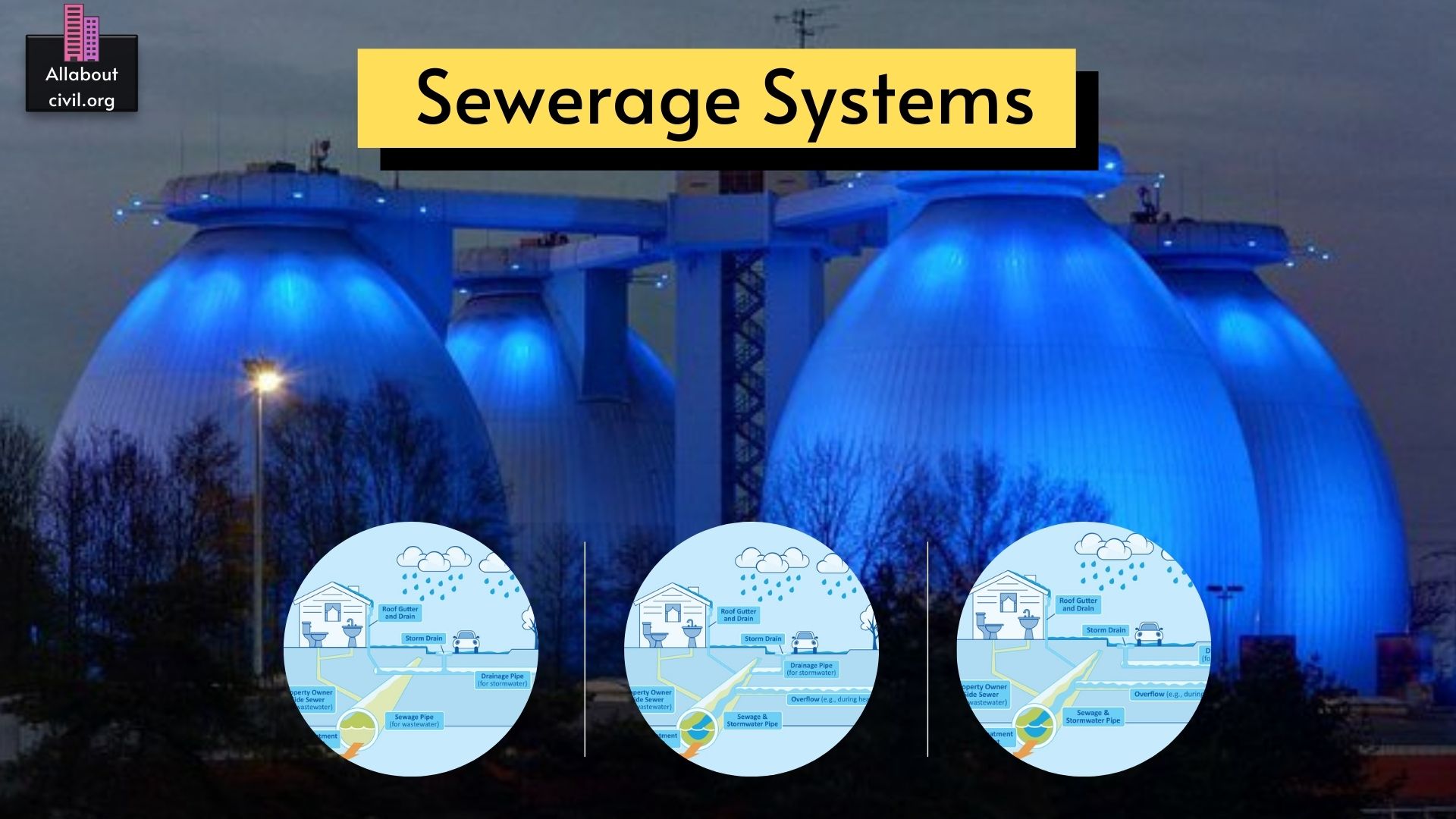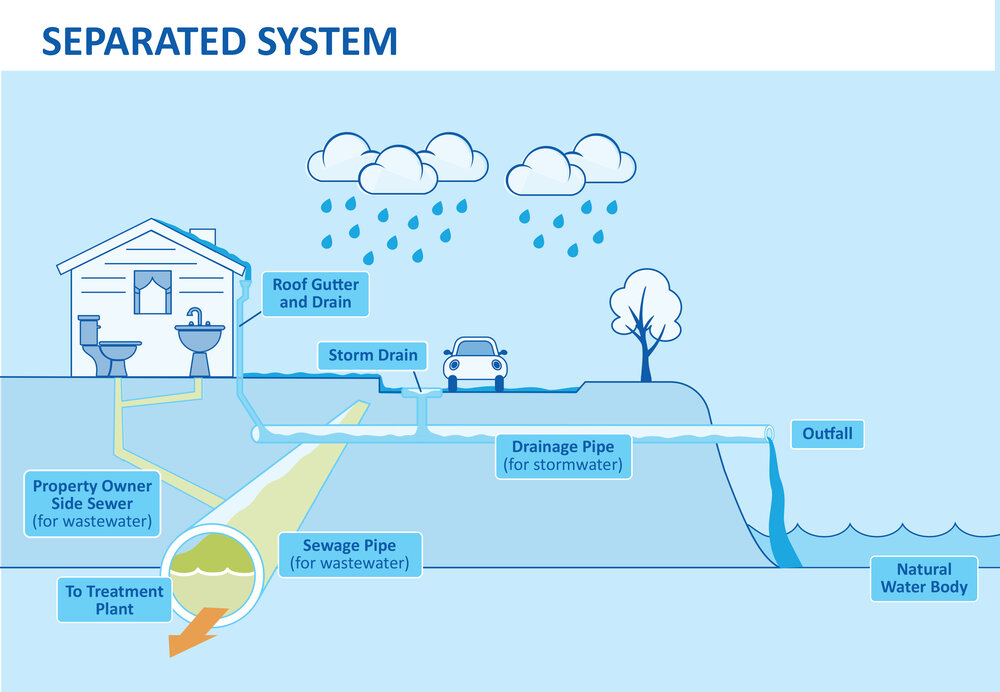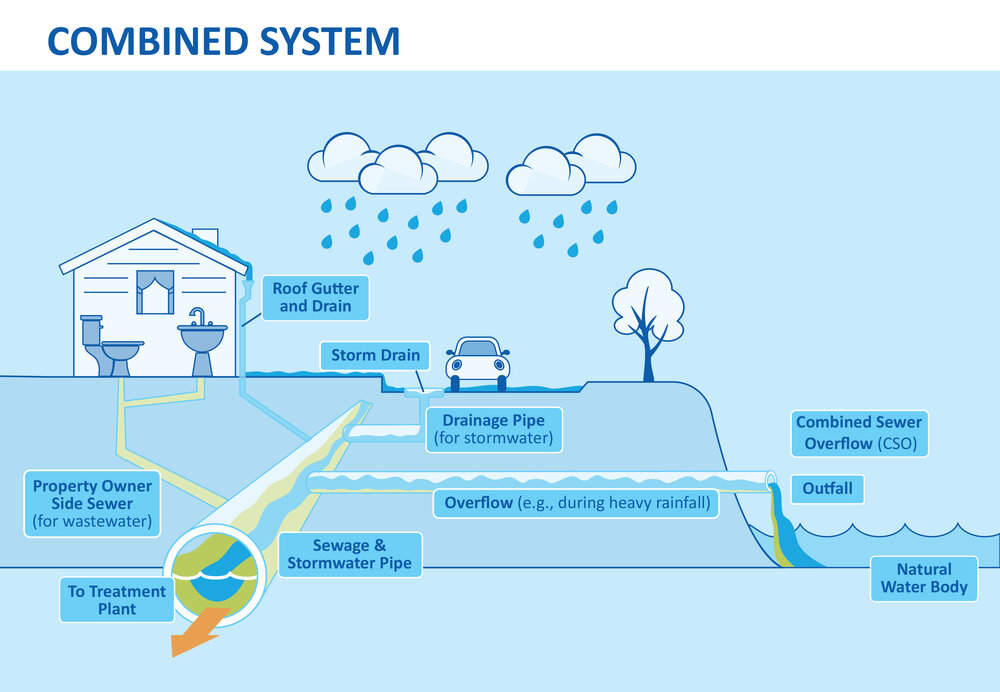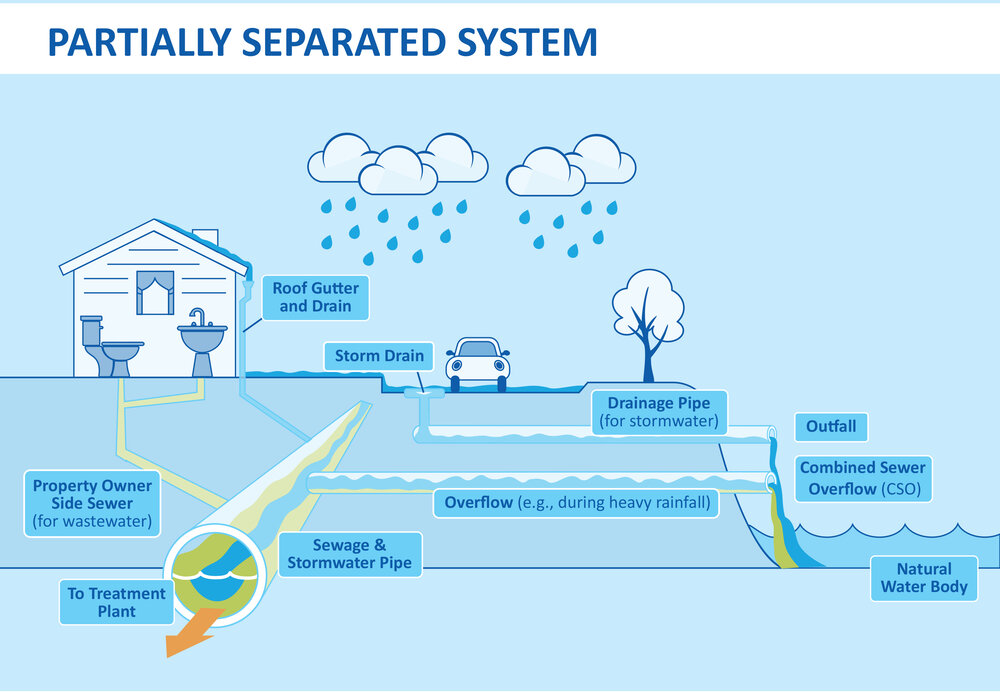
What is Sewerage?
Sewerage is the system or infrastructure by which waste matter or sewage is carried away in sewers.
There are 3 different types of sewerage systems, As explained below
Types of Sewerage Systems:
1. Separate System of Sewage
2. Combined System of Sewage
3. Partially Combined or Partially Separate System
Separate System of Sewerage:
 |
| Image source – Shapeourwater.org |
In this system two sets of sewers are laid .The sanitary sewage is carried through sanitary sewers while the storm sewage is carried through storm sewers. Sewage is taken to the treatment plant and the storm water is disposed in the river.
Advantages:
- Sewers size’s are small
- Load of Sewage on treatment unit is less
- Rivers won’t be polluted
- Storm water can be discharged to rivers without any treatment.
Disadvantage:
- Due to Sewerage are small, There will be difficulty in cleaning them
- There will be Frequent choking problem
- System proves costly as it involves two sets of sewers
- The use of storm sewer is only partial because in dry season the will be converted into dumping places and may get clogged.
Combined System of Sewage:
 |
| Image source – Shapeourwater.org |
When only one set of sewers are used to carry both sanitary sewage and surface water. This system is called combined system. Sewage and storm water both are carried to the treatment plant through combined sewers
Advantages:
- Chocking problems are less and easy to clean as the Size of the sewers are large
- It is economical as only one set of sewers are laid.
- Nuisance potential is reduced, Because of dilution of sanitary sewage with storm water
Disadvantages:
- Due to Size of the sewers being large, it is difficulty in handling and transportation.
- Load on treatment plant is unnecessarily increased
- It is uneconomical if pumping is needed because of large amount of combined flow.
- Unnecessarily storm water is polluted.
Partially Combined or Partially Separate System:
 |
| Image source – Shapeourwater.org |
A portion of storm water during rain is allowed to enter sanitary sewer to treatment plants while the remaining storm water is carried through open drains to the point of disposal.
Advantages:
- The sizes of sewers are not very large as some portion of storm water is carried through open drains.
- Combines the advantages of both the previous systems.
- Silting problem is completely eliminated.
Disadvantages:
- The velocity of flow may be low, During summer or dry weather
- The storm water is unnecessary put load on to the treatment plants to extend.
- Pumping of storm water in unnecessary over-load
Difference between separate system and combined system of Sewerage
| Separate system | Combined system |
|---|---|
| The quantity of sewage to be treated is less, because no treatment of storm water is done | As the treatments of both are done, the treatment is costly. |
| In the cities of more rainfall this system is more suitable. | In the cities of less rainfall this system is suitable. |
| As two sets of sewer lines are to laid, this system is cheaper because sewage is carried in underground sewers and storm water in open drains. | Overall construction cost is higher than separate system |
| In narrow streets, it is difficult to use this system. | It is more suitable in narrow streets |
| Less degree of sanitation is achieved in this system, as storm water is disposed without any treatment. | High degree of sanitation is achieved in this system. |

